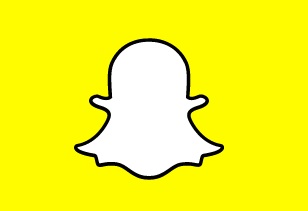What does the Snapchat IPO mean for the media industry?

With Snapchat valued at as much as $35bn ahead of its forthcoming IPO, now seems like as good a time as any to look into the chat app’s explosion, and what it means for media businesses.
Over the last few months, I’ve spoken to dozens of senior digital executives, not just those in commercial and editorial roles, but also those in disciplines like social media strategy and audience development. Two things have become apparent from those conversations: firstly, chat apps are becoming an increasingly important part of online publishing strategies; secondly, no one really knows what to do with them, or how it’s going to play out.
In terms of its user base, Snapchat is still lagging behind players like WhatsApp and Facebook Messenger. But Snapchat has much higher penetration among millennials, and is increasingly central to their usage habits. And what also sets Snapchat apart is its user-friendly, stylish, and adaptable news and content feeds.
Media owners are increasingly having to adapt digital strategies: where engagement used to be about driving eyeballs to their sites, it is now about placing content to where people actually spend time. The obvious winner here is Facebook, which now dominates the online publishing space; this year, it appears to have made more in advertising revenue than the entire US print newspaper industry. Publishers get a share of that, but every tweak in Facebook’s algorithm can have a huge impact on their revenues.
So Snapchat’s growth is also a glimpse of another future twist for media owners. While apps like WhatsApp and Telegram allow people to share articles (and the click-through rate is generally high), what sets Snapchat apart is those feeds I mentioned. Big online publishers can’t just flood the app with links to their content. In fact, many now have a distinct Snapchat strategy (or have one in the works), and its young user base is a big reason. Many of the youngest internet users rarely visit a newspaper website, so this is a way for big publishers to try and build some brand loyalty early on within that hard-to-reach group.
Over the last few months, two very senior decision-makers at newspaper companies have told me they think the desktop will die before print. I can see the logic – mobile is fast becoming the main point of access for many internet users. Snapchat is therefore doubly interesting to publishers as, in addition to being a link to previously untapped groups, it provides access to a large and engaged community of mobile users.
So a double win for publishers if they get in on Snapchat? Well, not quite yet. There are problems with monetisation. One contact, who runs a newspaper publishing business, says that ‘standard online display just doesn’t work on mobile. The only things that works are video, audio and native’. So, big publishers can’t just slap their usual ads on pages are expect them to work. They need to find a new solution for this destination. However, if they can work that out, there could be rich returns as video, audio, and native ads also encourage higher engagement, and often higher rates, than standard display.
A further pitfall is that, so far, it’s very difficult to track levels of Snapchat engagement. Its analytics reporting remains sketchy, certainly compared to Facebook, which provides a huge amount of data for publishers and advertisers. It will need to improve significantly on that score if it’s looking to justify that flotation number. And the problem with focusing primarily on younger users is that they can be very fickle – it’s perfectly possible they could desert Snapchat in their droves if it becomes unfashionable, or if something more exciting comes along.
Either way, we watch how this one develops with interest.
matt@trippassociates.co.uk